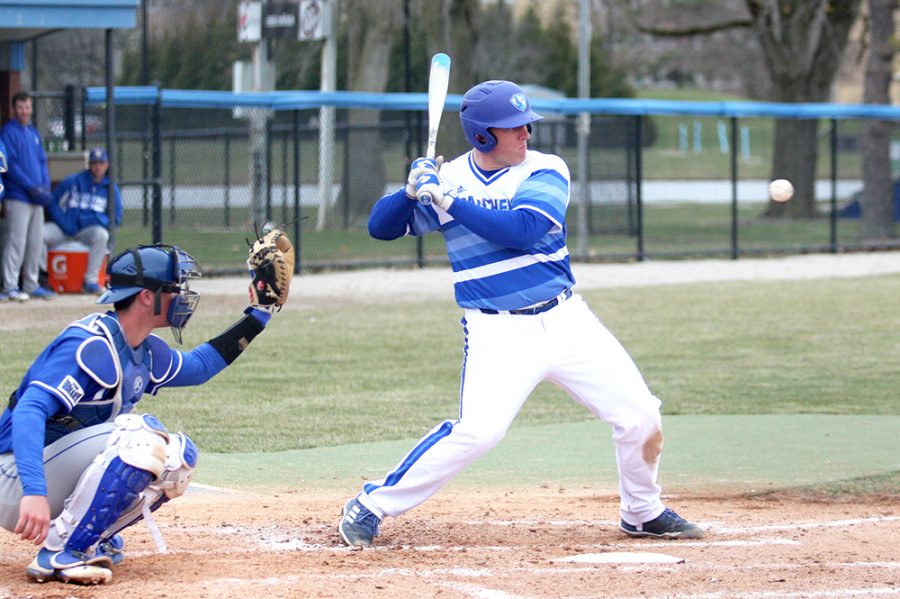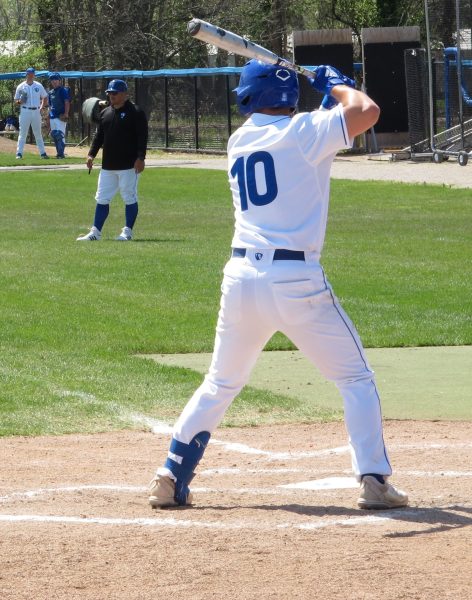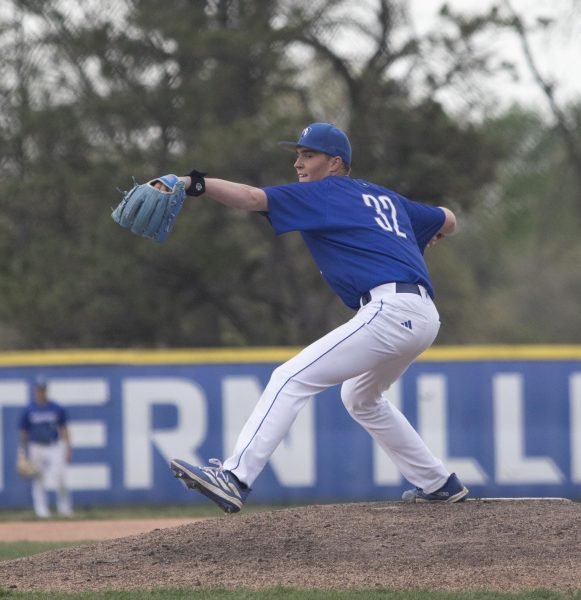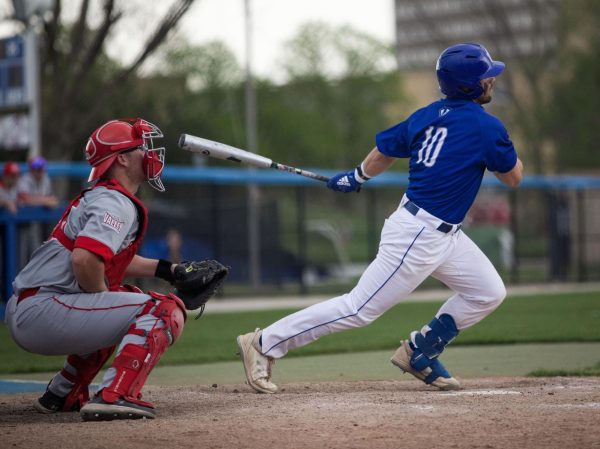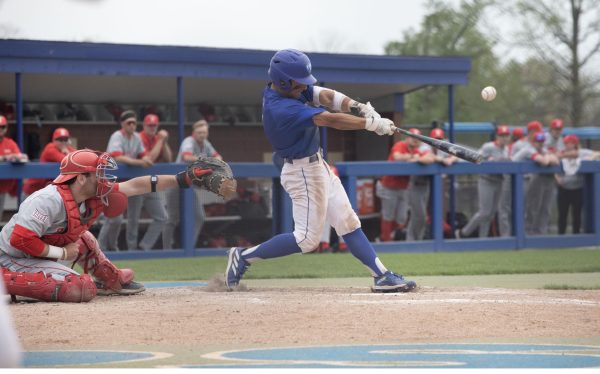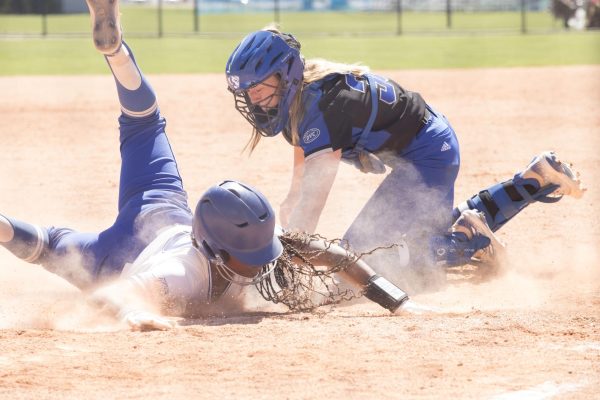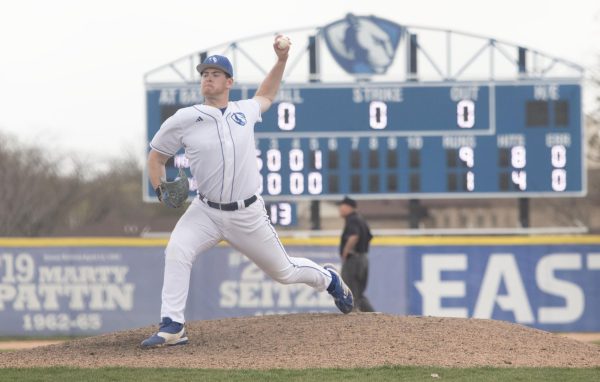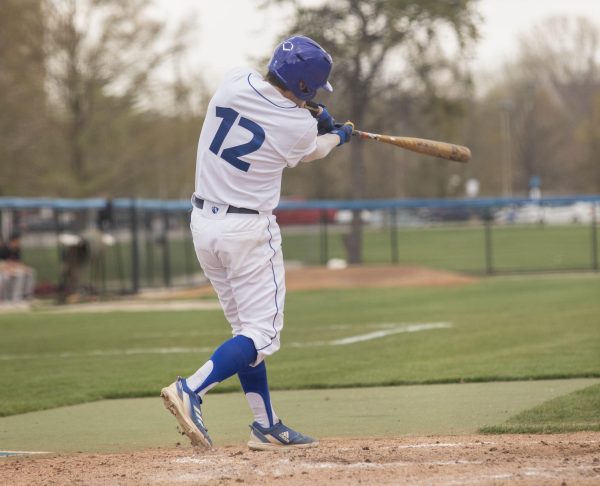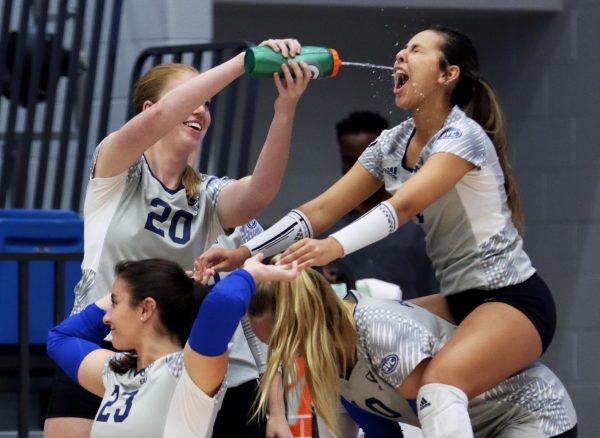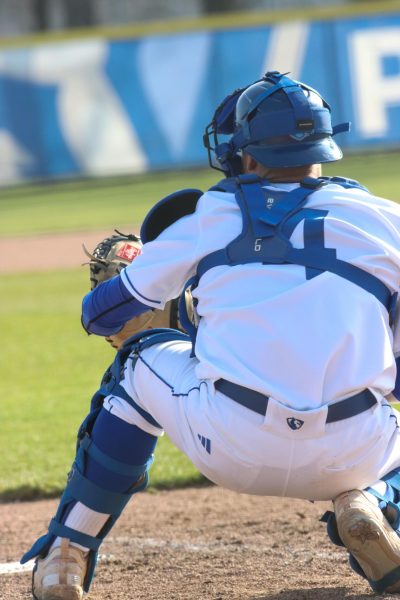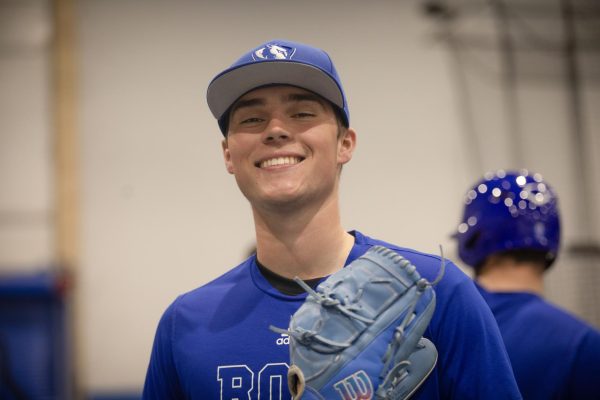Panthers make most of inside practice
Senior Matt Albert backs out of the way of the pitch from Indiana State’s pitcher. Eastern is set to start a three-game series with Tennessee Tech Friday with a doubleheader starting at 11 a.m.
March 29, 2018
Loud echoes, screeches off metal bats, and the pop of catcher’s gloves filled the fieldhouse as the Eastern baseball team had an unorthodox practice Tuesday night.
Due to the rain cancelling Tuesday’s game at Coaches Stadium, the team moved inside from 7-11 p.m. to practice working on hitting mechanics. Once the team stretches and warms up, the players migrate to two batting cages, carrying buckets of baseballs and two tees.
Through an organized and specific routine, the first group of hitters begin with the simplest, yet important, mechanic drill: tee-work. While pitchers warm up their arms and catchers take groundballs to their chest, baseball practice is underway.
Assistant coach Blake Beemer squats down on a bucket, examining the mechanics of each player’s swing, making comments and providing tips. During this make-shift practice, the coaches can work on more specific drills compared to normal team practices.
“It gives us a chance to get a little more individual with the guys and to work on specific things,” Beemer said. “It kind of slows the game down. It’s a chance for us to take out the excess noise from outside and get particular with the guys’ approach and mechanics.”
Once players have taken their reps on the tee, a couple players at a time take a few steps to the left to phase two of batting practice: soft toss. Throwing cages are set up where players sit on buckets, lightly throwing batting practice while protected.
Soft toss practice is used to slow down a batter’s swing, emphasizing the fluidity of the bat as it drives through the ball without expecting change-ups or curveballs. Players on the team use this opportunity to fix anything they have not had the chance to during games.
At 7:30 p.m., pitchers and catchers head over to the third and final batting cage where they make due with an artificial mound. The final step of their batting routine ends with live batting practice, treating it as if it is a game situation.
After 10 minutes of warming up, situation hitting begins. To make it feel like a game, two pitchers, simulating an opposing team’s pitcher, throw 15 pitches each, and batters get a single at-bat.
The pitchers treat practice as if it is a live game, throwing 100 percent and working in their arsenal of pitches. As for the batters, this is a perfect opportunity to work on hitting off-speed pitches and adjusting to them.
“Being on time with the pitcher, focusing on the controlled stuff because when we’re outside, we focus on defense,” redshirt junior outfielder Jack Holden said. “For me, it’s getting my hands back in a loaded position and working on my struggling time.”
Behind the cages is assistant coach Julio Godinez, clocking each pitch’s speed and encouraging pitchers to dominate the strike zone. On a sheet of paper attached to a clipboard, Godinez tallies the count and which pitches are thrown; fastballs or off-speed.
Senior pitcher Logan Beaman, winds up and throws a fastball past the high-leg kicking redshirt senior Frankie Perrone. During this drill, the catchers call the balls and strikes, bringing in mixed signals and questionable facial expressions from Perrone.
Next to Godinez and sitting relaxed on a fold-out chair is head coach Jason Anderson, assessing the pitcher’s mechanics and pulling them aside once their 15 pitches is up.
“Everybody that hasn’t been in games, the guys who haven’t dressed and things like that,” Anderson said. “We have to keep those guys going and practicing.”
During practice, there is never a moment when a player is not working on something specific. Across the fieldhouse, players are jogging, lining up the pitcher, or off to the side stretching out their bodies with leg rollers and elastic bands.
As the first group of batters and pitchers begin to wind down, the rest of the team begins to trickle in at 8:30 p.m., going for light jogs and doing arm stretches. Players usually stay for three hours; however, players could leave after two hours at this practice.
As a team, the Panthers are a tight-knit group, always providing tips to one another on their swing, pitching mechanics, while laughing and having a laid-back practice. At the end of the day, they all practice for one goal: to move up in the OVC standings and prove their worth.
Adam Shay can be reached at 581-2812 or [email protected]


































